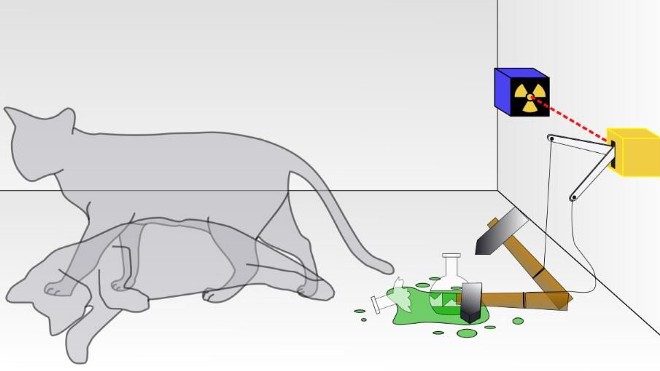Why Do We Still Have to Work?

In a 1930 essay called “Economic Possibilities for Our Grandchildren,” the economist John Maynard Keynes wrote that “assuming no important wars and no important increase in population, the economic problem may be solved, or be at least within sight of solution, within a hundred years.”
The Great Depression was just beginning. Few people were as optimistic as Keynes. But Keynes pointed out that in spite of the economic crisis—and in spite of the fact that many people were suffering—Europe and the U.S. were still vastly richer than they had been before the Industrial Revolution. Keynes argued that the depression did not mean that the economy was fundamentally weak, In fact, he wrote, the depression was caused by the speed with which the economy had been growing. If productivity continued to increase by just a few percent every year, then through the miracle of compound interest we could be eight times better off in 2030 than we were in 1930. And, with that much wealth, we would finally be able to satisfy everyone’s basic needs. We might still want more, but what Keynes called the “economic problem” would be be solved. For the first time in human history, our problem would be not how to provide for ourselves, but what to do with all our free time.
Eighty-two years later, with the economy again faltering, it doesn’t feel like the economic problem is close to being solved. But—in spite of another world war and a growing world population—Keynes’ prediction is still roughly on target. The Bureau of Economic Analysis estimates that the U.S. economy is about 15 times larger in real terms today than it was in 1930. Per capita income is about about 6 times larger, and is on pace to be nearly 8 times larger in 2030. Nevertheless, as Mike Beggs has remarked, we still don’t have robot butlers to do our work for us and are still not close to the 15-hour work week Keynes envisioned. If we’re really so much richer, why don’t we feel that way?
Part of the answer has to do with how our wealth is divided up. As Lawrence Mishel points out, until the early 1970s hourly real compensation in the U.S. roughly kept pace with gains in productivity. That hasn’t been true since then. Although productivity more than doubled over the last 40 years, what workers make in wages and other compensation has barely grown at all. Real weekly wages actually peaked in 1972 and real median household income has grown just 7% since then.
Mishel’s analysis suggests that part of the reason is that management and shareholders are taking home an increasingly large share of our national income. As Paul Krugman points out, in recent years labor’s share of income has dropped dramatically, from about 65% a decade ago to just 58% today. Another part of the reason is that consumer goods and services have become relatively more expensive than capital goods. In particular, as former Treasury Secretary Lawrence Summers says, the cost of necessities—food, housing, healthcare, energy, and education—has stayed the same or increased relative to wages. The result is that most of the economic gains of the last 40 years have gone to the people who own the means of production. People who work for a living haven’t really seen their purchasing power increase.
Krugman argues that we may be seeing what economists call “capital-biased technological change.” As machines become more productive, the people who own them may be keeping a larger share of the profits. At a recent talk, according to Owen Zidar, Summers asked us to imagine what the world would look like if machines could make or do anything. In this world, robot butlers could free us from work by providing us with the necessities of life. The problem is that in this world the profits of robot labor would go only to the people who own the robots or who could think of innovative new ways to use them. Everyone else would make almost no money at all. Although we are obviously not at that point yet, Summers argued that we may already be 15-20% of the way there. Indeed, increasing automation may be part of the reason why, according to the Bureau of Labor Statistics, 3.5 million jobs U.S. manufacturing jobs disappeared in the last decade alone. And it may go a long way toward explaining why the average worker’s compensation has basically stopped growing.
The net result is that economic inequality is increasing just as we are finally beginning to have enough to provide for all of our citizens. The same technology that makes us rich as a society gives the people who control it the power to take home a larger and larger share of our income. Barry Lynn and Phillip Longman make the case that the U.S. economy is increasingly dominated by a relatively small number of monopolistic corporations, which use their market power to maximize their profits rather than investing in new business or creating new jobs. Krugman adds that this kind of monopolistic “rent-seeking” would explain why corporate profits are rising while interest rates—which represent return on investment—remain low. In any case, as Izabella Kaminska says, the control of patented technology means that “the fruits of innovation flow to the owners of capital and invention, forming a whole new rentier class.”
This is not the world Keynes imagined. We are richer today than any society before in human history. But if innovation slows and inequality continues to grow, the economic problem will remain as bad for most of us as ever.
Follow me on Twitter: @rdeneufville
Assembly line image courtesy of PENGYOU91 / Shutterstock.com





